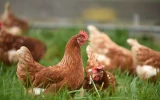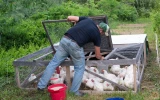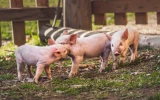Is Quail Farming Profitable? (Detailed Breakdown)
Quail farming, a lesser-known yet growing aspect of agriculture, focuses on raising quails for their eggs and meat. While not as common as chicken farming, quail farming attracts interest due to its lower space requirements and potentially faster turnover. In this article, we'll delve into the profitability of quail farming, providing a detailed analysis of costs, revenues, and key factors influencing success in this niche market.
Quail farming can be profitable, with an average ROI of 1.5–2 years, but its profitability hinges on market demand, efficiency, and scale. Initial costs for a small setup include breeding stock, housing, and feed, ranging from approximately $1,000–$5,000. Operating costs vary, but feed is the largest expense.
Quail sells for $3–$5 each, with meat and eggs as primary revenue sources. Focusing on the quality and unique selling proposition of your products can set you apart and boost your income. Let's get to know more tips on how you can optimize your income in quail farming.
Summary
- A 100-quail farm earning $0.25 per egg can make an $800 monthly profit, while larger farms with 1,000+ quails can make up to $5,000 monthly profit from premium $1 eggs, showing how selling quail eggs can be very lucrative.
- Housing costs make up a significant portion of the initial investment for starting a quail farm, with basic cages costing $100–$1,000 and larger housing structures ranging from $500–$5,000.
- Ongoing feeding costs are a major operational expense, with starter feed ranging from $30–$100 per month and layer feed $25–$90 per month
- Coturnix quail are widely considered the most profitable breed to raise (gaining an estimated profit of $5–$10 per bird) due to their fast growth rate, high egg production starting at 6 weeks old, and ability to be ready for harvest in 8 weeks.

On this page:
Profit Breakdown From Quail Farming
When considering the profitability of quail farming, your return on investment (ROI) is a key factor.
Initial investment
Initially, your costs will include infrastructure, feeding, breeding stock, and marketing efforts. Good farm management practices can help curb these costs over time.
- Infrastructure: $500 - $2000
- Breeding stock: $100 - $500
- Feeding costs: $0.10 - $0.20 per quail per month
Potential income
You can expect to start generating income from meat and egg sales as early as 7-8 weeks for meat and around 50 days for eggs.
- Quail meat: Potential income of $3 - $5 per bird
- Quail eggs: Potential income of $1 - $3 per dozen
Operational costs vs. income
Your operational expenses will involve feed, healthcare, labor, and ongoing marketing, but with efficient farm management, these costs can be optimized.
- Monthly operational costs: $200 - $1,000
- Average monthly income: $500 - $3,000
Calculating the ROI
To calculate your ROI, subtract the total costs from the total income generated, then divide that by the total costs and multiply by 100 to get a percentage.
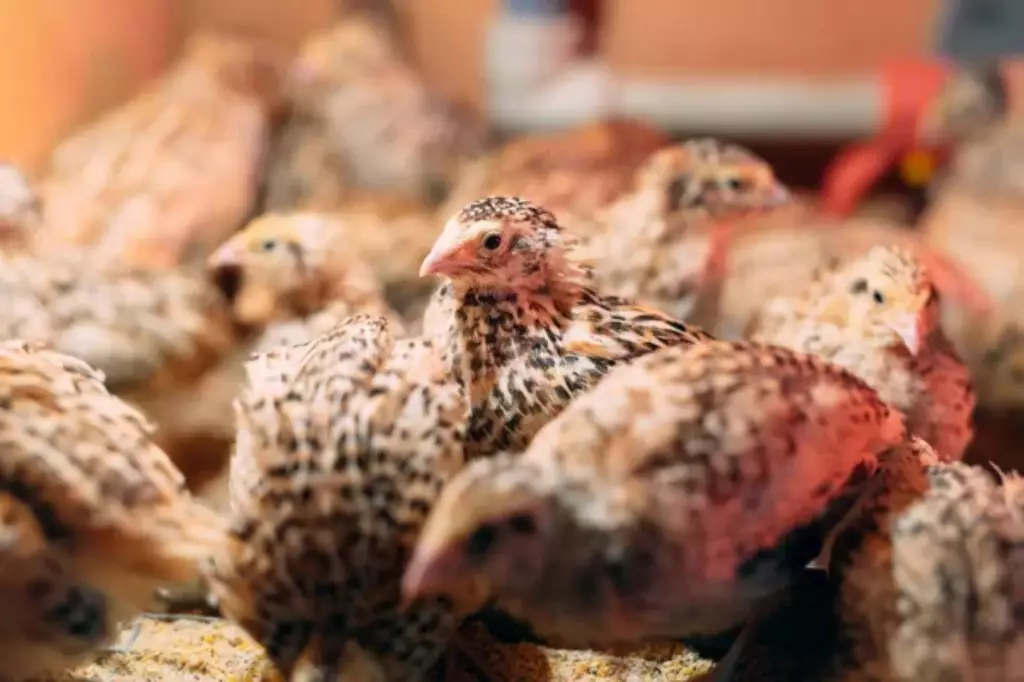
Let's assume the following:
-
Initial investment:
- Infrastructure: $1,000
- Breeding stock: $300
- Total initial investment: $1,300
-
Monthly income:
- 100 quails sold for meat at $4 each = $400
- 120 dozen eggs sold at $2 per dozen = $240
- Total monthly income = $640
- Total annual income = 12 * $640 = $7,680
-
Monthly operating costs: $500
-
Total annual costs = $1,300 (initial) + 12 * $500 (operating) = $7,300
The ROI is calculated as:
ROI (%) = ((Income - Cost) / Cost) x 100
ROI (%) = (($7,680 - $7,300) / $7,300) x 100 = 5.5%
Therefore, based on the assumed costs and income, the ROI is 5.5%. This indicates a profitable investment.
Calculating the profit margin
Let's assume a quail farm with 500 birds. The estimated revenue per bird is around $2 per bird annually. With 500 birds, the estimated annual revenue is $1,000.
The estimated expenses per bird include feed, labor, housing, etc. These are around $1.50 per bird annually. With 500 birds, the estimated annual expenses are $750.
The profit per bird is the revenue per bird minus expenses per bird, which is $0.50.
With 500 birds, the estimated total annual profit is $250.
The profit margin is calculated as:
Profit margin = (Total profit / Total revenue) x 100
Using a revenue of $1,000 and a profit of $250, the profit margin is:
*Profit margin** = ($250/$1,000) x 100 = 25%
Therefore, the profit margin for a 500-bird quail farm is 25%. Profit margins for a quail farm can vary from 10-30% depending on feed costs and other factors, with smaller operations generally having lower margins.
Quails are one of the best animals to raise on an acre of land. Keeping 500 quails in your small land area can already make a good profit.
Is Selling Quail Eggs Profitable?
Selling quail eggs can indeed be profitable for you. Their small size may seem deceiving, but there's a niche market that values these eggs for their taste and nutritional benefits.
| Number of Quails | Feed Cost | Price per Egg | Monthly Profit |
|---|---|---|---|
| 100 | $200 | $0.25 | $800 |
| 500 | $800 | $0.50 | $2,000 |
| 1000+ | $1,500 | $1.00 | $5,000 |
The estimated monthly profit is based on the following assumptions:
The feed cost per quail is around $2 per month.
- Egg production per quail is 5-6 eggs per month.
- Egg prices range from $0.25 for lower tier to $1 for premium eggs.
- Other costs like housing and labor are fixed.
- Profit margin improves with scale due to lower fixed costs per bird.
So a small 100-quail farm has a moderate $800 monthly profit, while a large 1,000+ quail farm has the highest $5,000 monthly profit.
Based on current market trends, you can sell quail eggs at a variety of price points. For example, prices range from lower tier for standard eggs to premium tier for organic or specialty eggs.
If you streamline your processes and find the right market, your quail egg business can reach a profit margin estimated at around 45%.
Remember, to maximize your profitability, focus on quality, efficient feed conversion, and targeted marketing. Cater to health-conscious consumers or specialty food markets which often seek out the high-protein and rich-flavor profile of quail eggs.
Breakdown of Costs Involved in Quail Farming
When you're diving into quail farming, your initial investment is directed toward several critical areas, including housing, feeding, and breeding equipment.
Housing costs
Quails require secure and comfortable enclosures. Whether you construct or purchase ready-made cages, the costs can range from $500 to $5,000 depending on scale and materials.
| Housing Component | Cost Range |
|---|---|
| Cages | $100 - $1,000 |
| Larger structures | $500 - $5,000 |
Feeding costs
Quails need a nutritious diet to thrive. The ongoing expense for feed and supplements is an integral part of your operational costs.
| Feed Type | Cost Range (Per Month) |
|---|---|
| Starter feed | $30 - $100 |
| Layer feed | $25 - $90 |
Breeding equipment costs
An incubator is essential if you're breeding quails. Prices vary widely based on capacity and features.
| Equipment | Cost Range |
|---|---|
| Incubator | $50 - $600 |
| Other breeding equipment | $20 - $200 |
You also need to budget for labor, bedding, and other miscellaneous items that ensure the smooth running of your farm. Once your business plan is in place, you can estimate these operating costs more precisely.
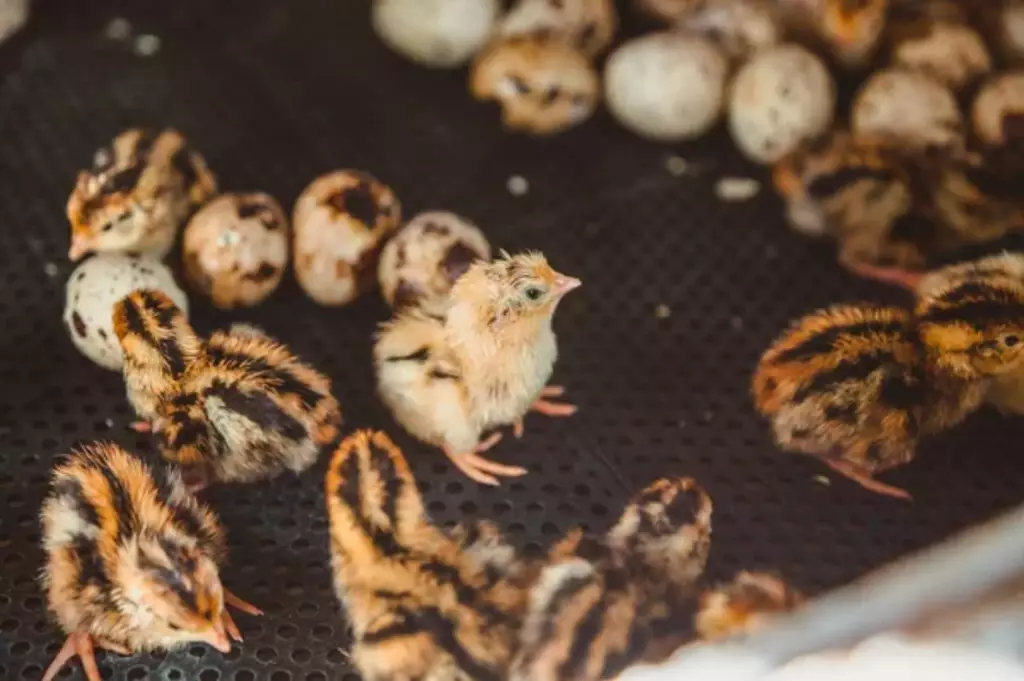
Choosing the right quail farming equipment
When setting up your quail farm, choosing the right equipment is crucial for smooth operations and to maximize your profits.
- Cages and housing: Your quails need a safe and comfortable environment. You can opt for various cage designs, including stacked cages, which are a great space-saving solution. They range in price from $50 to $200 depending on size and complexity.
| Housing Type | Cost Estimate |
|---|---|
| Basic quail cage | $50 - $100 |
| Stacked quail cage | $100 - $200 |
- Feeders and waterers: These keep your quail well-fed and hydrated. A typical feeder costs between $5 and $25, while waterers range from $10 to $30.
| Equipment Type | Cost Estimate |
|---|---|
| Feeder | $5 - $25 |
| Waterer | $10 - $30 |
- Incubators: If you're raising quail for eggs, incubators are essential. They facilitate egg hatching and vary in price from $50 for basic models to $200 for advanced versions.
| Incubator Type | Cost Estimate |
|---|---|
| Basic | $50 - $100 |
| Advanced | $100 - $200 |
- Brooders: For newly hatched chicks, brooders provide a warm space necessary for survival. A simple brooder can cost around $30, while more elaborate ones may be up to $100.
| Brooder Type | Cost Estimate |
|---|---|
| Basic | $30 - $50 |
| Advanced | $50 - $100 |
Factors Affecting Quail Farm Profits
Market demand and pricing
Your quail farm's profitability starts with market demand for quail meat and eggs. These products are valued for their nutritious content, rich in protein, vitamins, and minerals. When demand is high, you can price quail products competitively to improve profits.
Feed and nutrition
Feed costs are crucial to manage. Optimize your quails' nutrition; high-quality feed rich in iron and protein leads to better growth and egg production.
Housing and space
Quail requires adequate space and shelter. A 1-acre smallholding can be enough to hold a profitable number of quails. Crowded conditions can lead to stress and disease, impacting profits negatively.
| Space per Quail | Estimated Cost |
|---|---|
| 1 sq ft | Low |
| 1.5 sq ft | Moderate |
| 2 sq ft | Higher |
Water supply
Water is vital for quails' health. Ensure a clean and continuous supply to maintain a productive flock.
Protection from predators
Predators can cause significant losses. Secure housing minimizes risks, especially important for backyard and commercial quail farms.
Effective marketing
Good marketing strategies will help you reach customers in high-demand areas, aligning with commercial objectives.
Farm location
Your farm's location affects access to markets, feed suppliers, and climate suitability.
| Factor | Impact on Profit |
|---|---|
| Accessibility | High |
| Climate compatibility | Moderate |
| Proximity to buyers | High |
Lighting conditions
Lighting can influence quail behavior and egg production. Natural or artificial light should mimic the necessary day length.
Strategies to Keep Costs Low and Profits High in Quail Farms
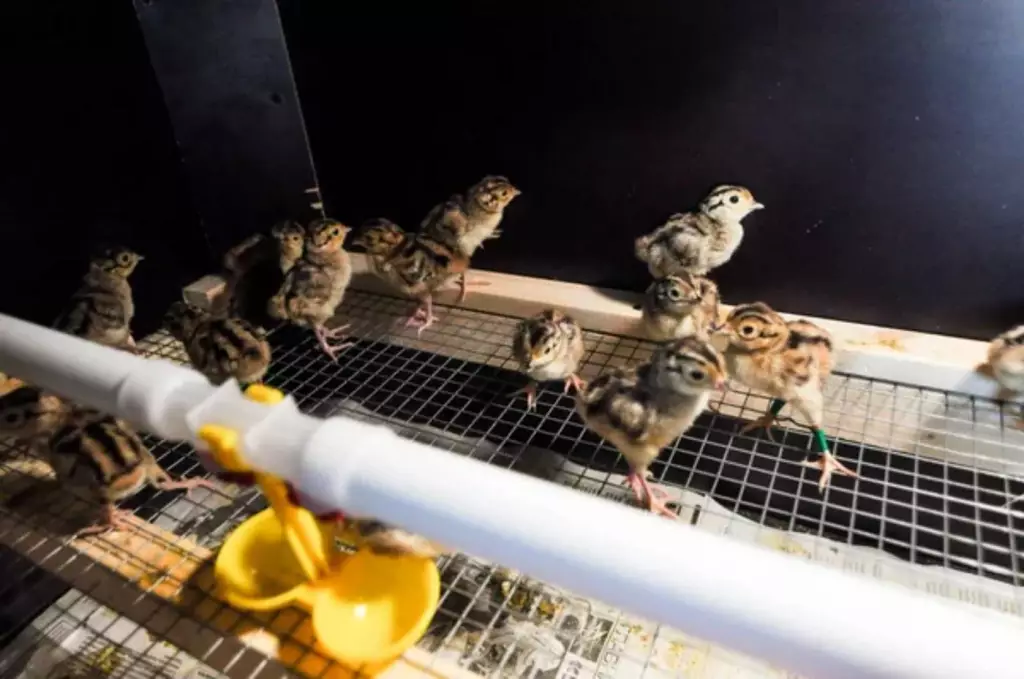
Cost control strategies
-
Buy economical feed: Quail diets should be high in nutrition while being cost-effective. Consider a mix of commercial feed with local forage to reduce expense.
-
DIY housing & equipment: Instead of purchasing expensive equipment, build your own pens and housing. Use cost-effective materials that are durable and easy to clean.
-
Efficient breeding: Opt for breeds like Coturnix quail that are known for their high egg production and ease of care.
Revenue enhancement techniques
-
Focus on egg production: Quail eggs are a specialty product with a higher profit margin. Ensure you have a balanced ratio of male to female quail to maximize egg-laying capacity.
-
Process for meat: Quail meat is lean and delicious. If local regulations allow, you can process meat on-site to reduce costs and sell for a premium.
-
Market specialty products: Highlight the nutritional value of quail eggs and meat, which are low in fat and carbohydrates.
Market for Quail Eggs
Quail eggs are becoming increasingly popular due to their nutritional benefits and culinary versatility. You'll find that these small eggs pack a high level of proteins, vitamins, and minerals. They are not only a delicacy in many cultures but also appreciated for their dietary advantages over chicken eggs.
In the rapidly growing quail eggs market, you can expect a compound annual growth rate (CAGR) of 6.1% from 2023 to 2028. By 2028, revenue is forecasted to reach up to $83.4 million from the 2022 figure of $68.6 million.
What is the most profitable quail to raise?
The most profitable quail to raise tend to be those that grow quickly, are hardy, and have high reproductive rates. Here are a few breeds that are known for their profitability:
- Coturnix quail (Japanese quail): These are widely popular due to their fast growth rate and early maturity. They start laying eggs as early as 6 weeks old. For meat production, they are often ready for harvest at around 8 weeks.
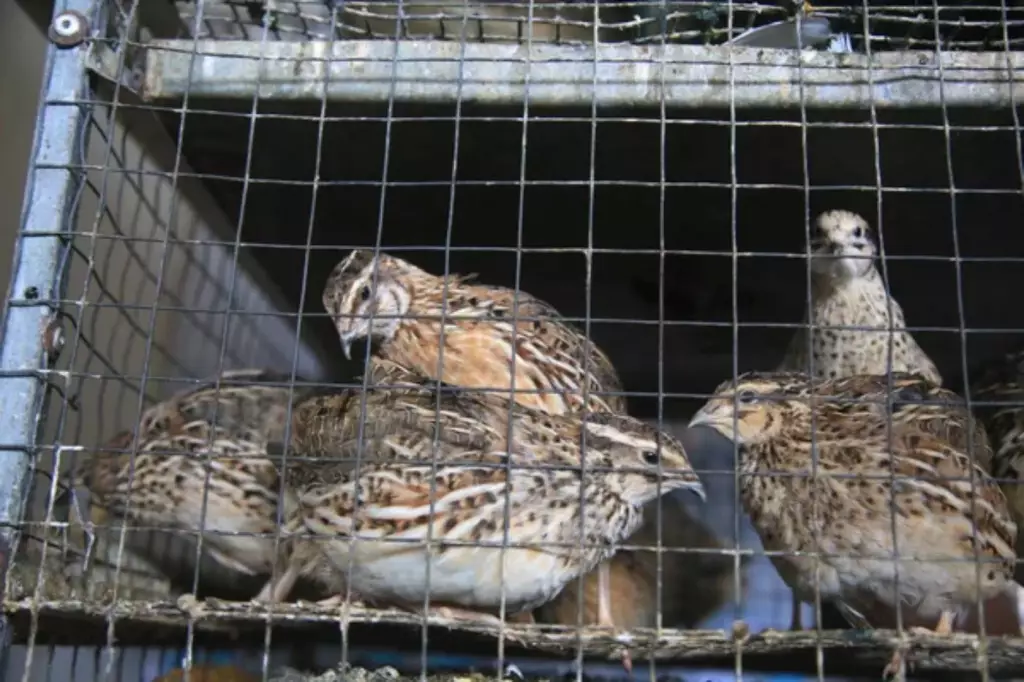
-
Bobwhite quail: They take a bit longer to mature than the Coturnix, with egg production starting around 16 weeks. However, Bobwhite quail meat is considered high quality and can command a higher market price.
-
California quail: Known for their beautiful plumage, these quails are raised both for meat and for sale as ornamental birds, which can sometimes fetch higher prices.
Below is an estimated profit range for these quail breeds based on egg and meat production:
| Breed | Eggs per Year | Meat Yield | Profit Range per Bird |
|---|---|---|---|
| Coturnix quail | 250-300 | High | $5-$10 |
| Bobwhite quail | 150-200 | Medium | $7-$12 |
| California quail | 50-100 | Low | Varies with market |
You'll find that the cost of raising quail is generally low compared to other poultry, as they require less space and feed. With the Coturnix quail's high reproductive rate, you can potentially see a faster return on investment, which makes them a particularly profitable choice for those looking to get into quail farming.
Remember to check your local zoning regulations before starting your quail farm, as they can impact where and how you can operate your business. For smallholdings in the US, complying with zoning laws is more common compared to the UK.
